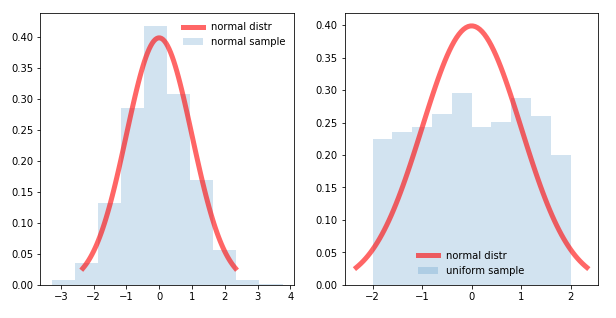-
Univariate: considering a single variable
-
Multivariate: considering multiple variables




The industrial IoT has already proven its versatility with deployments going live in a number of enterprises, showing off dozens of different use cases. But a few key uses consistently present themselves within the same trade, and even throughout different industries.
It’s important to note that IoT use cases will likely expand in the next few years. That being said, we have compiled the top five industrial IoT use cases of today:
Keeping assets up and running has the potential to significantly decreasing operational expenditures (opex), and save companies millions of dollars. With the use of sensors, cameras and data analytics, managers in a range of industries are able to determine when a piece of equipment will fail before it ever does. These IoT-enabled systems can sense signs of warning, use data to create a maintenance timeline and preemptively service equipment before problems occur.
By leveraging streaming data from sensors and devices to quickly assess current conditions, recognize warning signs, deliver alerts and automatically trigger appropriate maintenance processes, IoT turns maintenance into a dynamic, rapid and automated task.
This approach promises cost savings over routine or time-based preventive maintenance, because tasks are performed only when they are needed. The key is to get the right information in the right time. This will allow managers to know which equipment needs maintenance, maintenance work can be better planned and systems remain online while workers stay on task. Other potential advantages include increased equipment lifetime, increased plant safety and fewer accidents with negative impact on environment.
A smart meter is an internet-capable device that measures energy, water or natural gas consumption of a building or home, according to Silicon Labs.
Traditional meters only measure total consumption, whereas smart meters record when and how much of a resource is consumed. Power companies are deploying smart meters to monitor consumer usage and adjust prices according to the time of day and season.
Smart metering benefits utilities by improving customer satisfaction with faster interaction, giving consumers more control of their energy usage to save money and reduce carbon emissions. Smart meters also give visibility of power consumption all the way to the meter so utilities can optimize energy distribution and take action to shift demand loads.
According to Sierra Wireless, smart metering helps utilities to:
A study on the maturity of asset efficiency practices from Infosys and the Institute for Industrial Management (FIR) at Aachen University revealed that 85% of manufacturing companies globally are aware of asset efficiency, but only 15% of the surveyed firms have implemented it at a systematic level.

Infosys and other supporting companies including Bosch, GE, IBM, Intel, National Instruments and PTC have launched a testbed with the main goal of collecting asset information efficiently and accurately in real-time and running analytics to allow the firms to make the best decisions.
The goal of asset tracking is to allow an enterprise to easily locate and monitor key assets (e.g. raw materials, final products, and containers) and to optimize logistics, maintain inventory levels, prevent quality issues and detect theft.
One industry that heavily relies on asset tracking is maritime shipping. On a large scale, sensors help track the location of a ship at sea, and on a smaller scale they are able to provide the status and temperature of individual cargo containers. One benefit is real-time metrics on refrigerated containers. These containers must be stored at constant temperatures so that perishable goods remain fresh.
Each refrigerated container needs to be equipped with temperature sensors, a processing unit and a mobile transmitter.
To continue reading, please visit the full article on Industrial IoT & 5G.
A smart, highly optimized distributed neural network, based on Intel Edison "Receptive" Nodes
Training ‘complex multi-layer’ neural networks is referred to as deep-learning as these multi-layer neural architectures interpose many neural processing layers between the input data and the predicted output results – hence the use of the word deep in the deep-learning catchphrase.
While the training procedure of large scale network is computationally expensive, evaluating the resulting trained neural network is not, which explains why trained networks can be extremely valuable as they have the ability to very quickly perform complex, real-world pattern recognition tasks on a variety of low-power devices.
These trained networks can perform complex pattern recognition tasks for real-world applications ranging from real-time anomaly detection in Industrial IoT to energy performance optimization in complex industrial systems. The high-value, high accuracy recognition (sometimes better than human) trained models have the ability to be deployed nearly everywhere, which explains the recent resurgence in machine-learning, in particular in deep-learning neural networks.
These architectures can be efficiently implemented on Intel Edison modules to process information quickly and economically, especially in Industrial IoT application.
Our architectural model is based on a proprietary algorithm, called Hierarchical LSTM, able to capture and learn the internal dynamics of physical systems, simply observing the evolution of related time series.
To train efficiently the system, we implemented a greedy, layer based parameter optimization approach, so each device can train one layer at a time, and send the encoded feature to the upper level device, to learn higher levels of abstraction on signal dinamic.
Using Intel Edison as layers "core computing units", we can perform higher sampling rates and frequent retraining, near the system we are observing without the need of a complex cloud architecture, sending just a small amount of encoded data to the cloud.